The International Seabed Authority is pleased to announce the winners of its art competition organized for World Oceans Day 2022 in two categories, local and international.
In the international competition, open to everyone around the world over the age of sixteen, the winners are:
First prize
Richard Nattoo, 29, from Jamaica
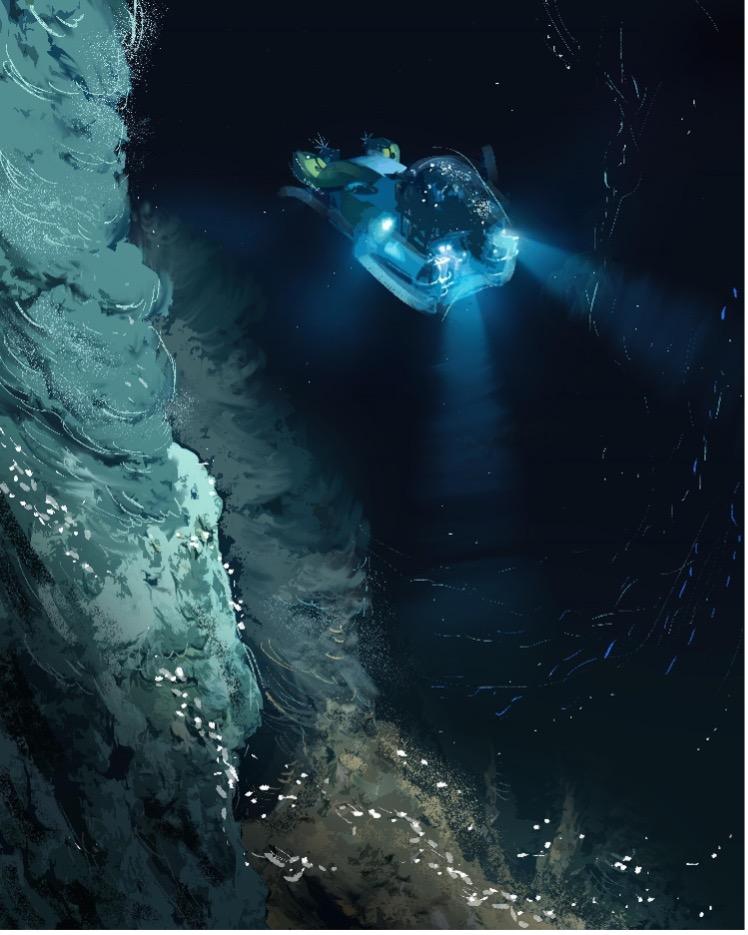 |
| I was very excited when I saw the open call to depict deep-sea exploration as the ocean has a core place within my work. There is this beautiful darkness and this mystery that the ocean possesses and I decided to create a piece that depicted just that. In my artwork, there is a deep-sea rover shining light on the ocean floor in the background. As you get closer to the foreground, you see some blue highlights as to represent cobalt crusts that are usually mined. In the foreground I included a few hypothermal vents with a few vent shrimp around them. While such a situation of all these elements in the same place might be a rare occurrence in real life, I think it was impossible to talk about deep sea exploration without mentioning these elements. The How – which is depicted by the rover The Why – which is depicted by the cobalt crusts The Where – which is depicted by the hypothermal vents The Who – which is depicted by the sealife, the vent shrimps. |
Second prize
Wanni Arachchige Damitha Nayananjani Monarawila, 28, from Sri Lanka
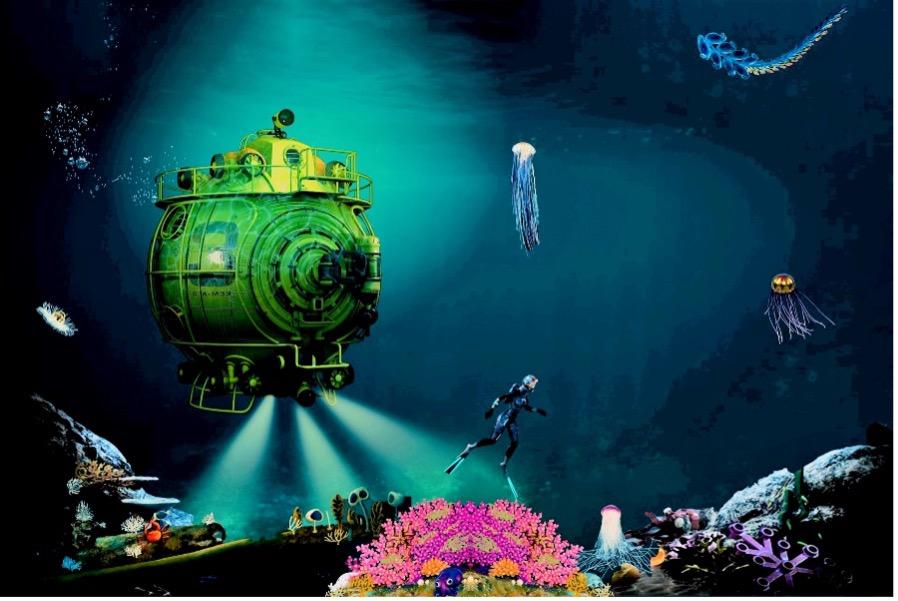 |
| After determining how to map out the ocean floor using sound equipment and sonar, scientists wanted to see the floor themselves. To achieve this feat, Dutchman Cornelis Drebbel built the first submarine in 1623. Since then, more and more improvements in the design have been made. This innovation of submarines allowed man to travel deeper into the ocean without being affected by cold temperatures and high pressures. To get up close and personal, however, man had to figure out how to swim underwater for long periods of time. For years’ humans swam underwater using long reeds as breathing tubes, the idea behind the modern day snorkel. The concept of feeding oxygen from the surface to the diver fuelerd the original designs for underwater diving.
Armed with new equipment and technology, humans were able to venture into the deep. It was previously believed that life could not exist in the deep sea due to a lack of light, cold temperatures, and high atmospheric pressures. However, the discovery of thermal vents in 1977 changed that theory. These vents, which are connected to the magma underneath the Earth’s crust, provide light, heat, and sulfur. Organisms such as the green sulfur bacteria thrive around these vents and actually feed off of the sulfur. These microorganisms act as the bottom of the food chain; larger organisms such as the giant tube worm feed on these bacteria and, therefore, must stay close to the vents. Deep sea areas support unique ecosystems and are sources for energy and minerals. Exploring the oceans will help us fill gaps to better understand planetary-scale processes including tectonics, marine hazards, energy, mineral and biological resources and other large-scale Earth systems. Improved knowledge of the deep sea will help us sustainably manage and use ocean resources. |
Third prize
Thammy Gularte Dias, 20, from Brazil
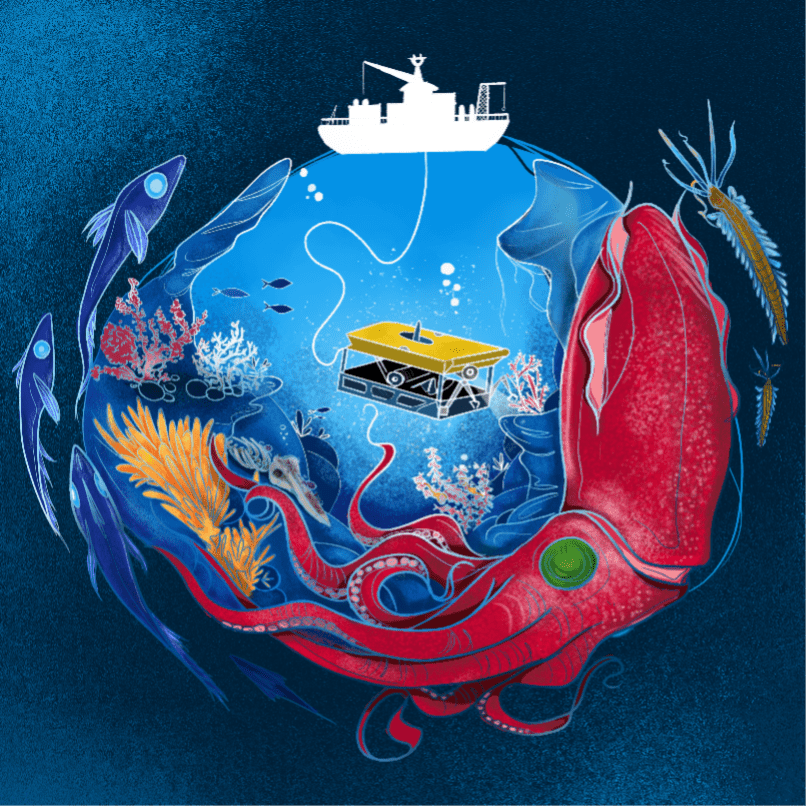 |
| The deep sea is one of the biggest biomes on Earth and still the least known. Despite its size and enormous current conservation importance, little was discovered in detail before the mid-20th century. Only after the 1970s, with technological advances in deep sea exploration, it was possible to gradually unravel the mysteries of the deep sea. And discovering that the environment that used to cause fear and estrangement is actually the stage for the development of amazing specialized species, such as beautiful Strawberry Squid, Paramuricea sp. and Bubblegum Coral, as well as new ecological relationships such as starfish coiled in Solenosmilia and enduring ecosystems discovered in environments such as whale falls. Thus, this work portrays a little of the ecological diversity that exists in its deep and dark environment beyond the reach of humanity that comes to be known thanks to the determination of researchers, through the exploration of the deep sea. |
In the local competition, open to school children under the age of 16 in Jamaica, the winner are:
First prize:
Victoria Hunter, 14
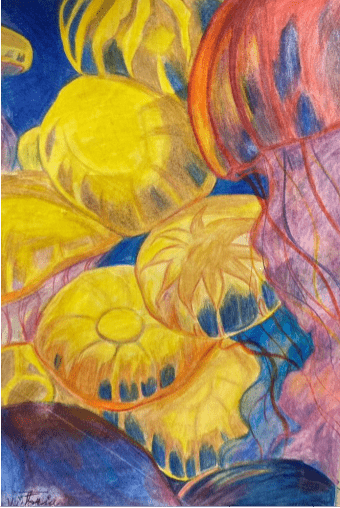 |
Chrysaora fuscescens, commonly known as the Pacific or West Coast Sea Nettle, is a common planktonic scyphozoan that lives on the west coast of the United States, and occasionally in the south of Mexico. The Sea Nettles are very unique for their yellow-brownish bells with a crimson hue around the rim. This bell can grow to a maximum of 30 inches in diameter with numerous long spiraling arms and 24 tentacles that can reach a length of 12 to 15 feet in length. The West Coast Sea Nettle squeezes their bell and pushes the water out, which allows them to resist currents. This piece showcases several sea nettles migrating from the deep depths in search of the sunlit surface water.
Second prize:
Yannick Anderson, 10
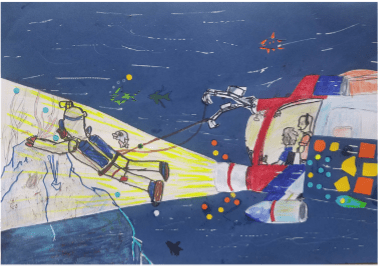 |
| My artwork is a painting done on a A3 size paper. The materials I used were white cartridge paper, yellow, orange and blue bits of paper along with crayon, markers, whiteout, and glitter paint. The work displays a diver in the sea attached to two safety ropes and his/her crew watching him/her from inside a submarine exploring the anomaly of the deep. The ropes that are secured to the diver are well attached to two mechanical arms of the submarine. Both the crew inside the ship and the diver is aided by a powerful light projecting from the front of the submarine. I also added bubbles to the fish and other deep sea creatures.
The importance of this work not only helps the artwork to come together visually but it also helps to provide education for individuals to be aware and find interest in deep sea exploration. This work is promoting team work, possible career, safety, and deep sea exploration. It is important that deep sea exploration is done as a means of finding out more about this foreign space of our world and ways of monitoring, and caring it for our own interest and possible survival. I think I did well in creating this piece as I spend a lot of time on it, using a variety of materials, tools, and techniques. I also think long and hard about what I should draw. In the end, I like the result except at the extreme right of the body of the ship where I placed several light colour shapes including irregular ones in informal order. |
Congratulations to the winners and thank you to all the participants!


